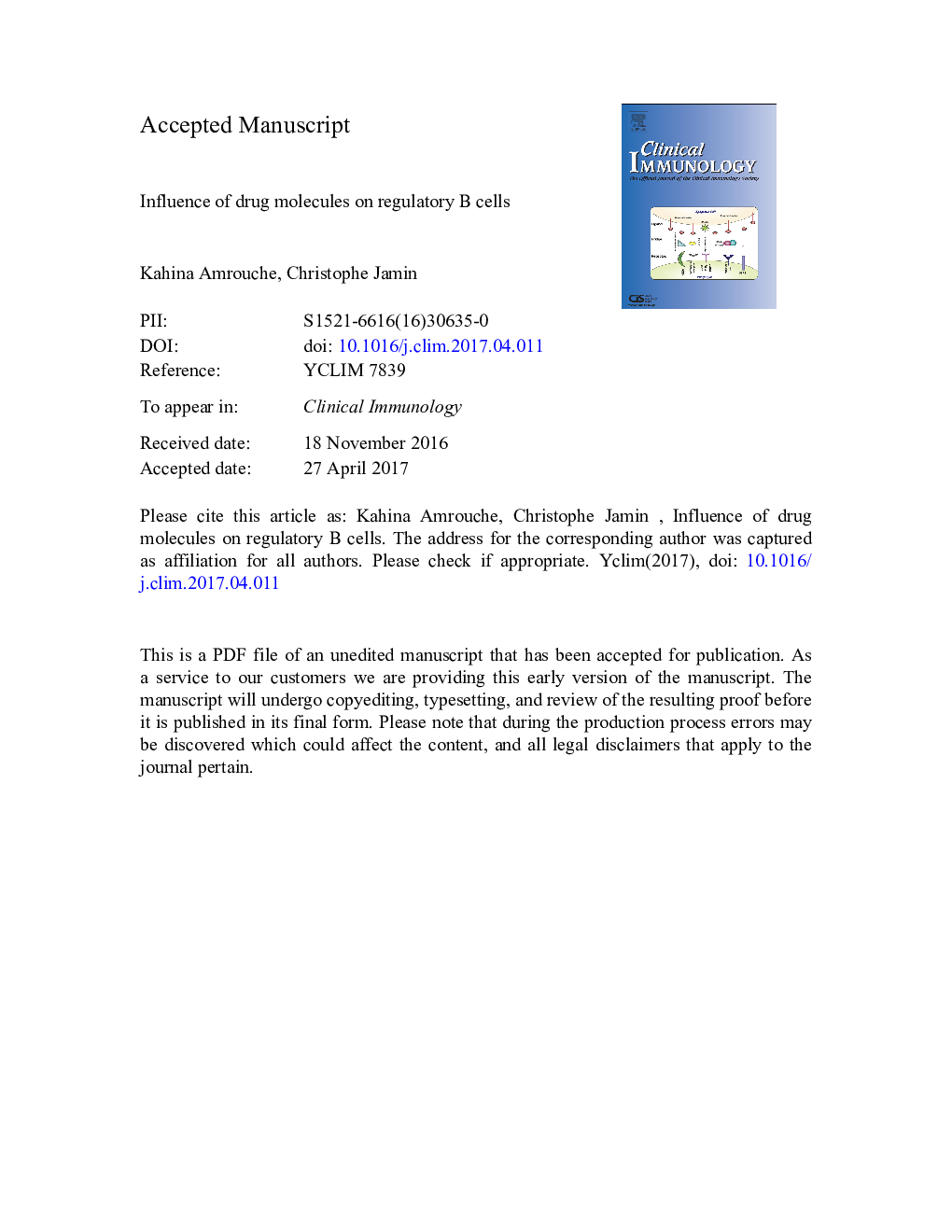| Article ID | Journal | Published Year | Pages | File Type |
|---|---|---|---|---|
| 8721489 | Clinical Immunology | 2017 | 40 Pages |
Abstract
By their suppressive functions, regulatory B (Breg) cells are considered as key elements in the control and development of various disease states. Many signals can induce Bregs in vivo and in vitro and often from heterogeneous populations. Several specific signals delivered in a timely immunological context contribute to the establishment of Bregs. These are endogenous and physiological signals or stimuli, widely discussed in the literature participating in the establishment of an effective immune response. However, exogenous signals, much less clearly identified can also be considered as Bregs inducers. These extrinsic signals are capable of directly or indirectly influencing the suppressive capacity of Bregs, but also their expansion and functional restoration in its absence. Faced with the excitement generated by the development of processes favoring the expansion of Bregs in mice for therapeutic purposes, the challenge today is to extrapolate such approaches in humans. This perspective may already be in effect.
Related Topics
Life Sciences
Immunology and Microbiology
Immunology
Authors
Kahina Amrouche, Christophe Jamin,
